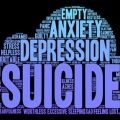Introduction: The Growing Concern of Blue Light Exposure in British Schoolchildren
In recent years, a notable shift has occurred within the daily routines of British schoolchildren—one driven by an increasing reliance on digital screens for both learning and leisure. Tablets, laptops, smartphones, and interactive whiteboards have become integral to the modern classroom and home environment, reflecting broader trends in UK society where technology is woven into the fabric of everyday life. While these advancements foster innovation and accessibility, they also introduce new health considerations, most notably the pervasive exposure to blue light emitted by digital devices. Across the United Kingdom, educators, parents, and healthcare professionals are raising concerns about how sustained screen time may impact the well-being of young people, particularly with regard to eye health, sleep patterns, and overall mental balance. As awareness grows around these issues, blue light has emerged as a topic warranting urgent attention within the context of British education. Adapting school curriculums to include blue light awareness not only aligns with safeguarding pupils holistic health but also resonates with the UKs cultural emphasis on proactive health education and well-being in schools. This article explores why acknowledging and addressing blue light exposure is rapidly becoming a vital issue for Britains next generation.
2. Understanding Blue Light: Science, Health, and Traditional Perspectives
Blue light, a component of visible light with a short wavelength and high energy, has become an increasingly important topic within British schools as digital device use rises. Scientific studies highlight that prolonged exposure to blue light can contribute to eye strain, disrupt the circadian rhythm, and affect overall wellbeing—particularly among young students who spend significant time on screens for both educational and recreational purposes.
From a Western scientific perspective, blue light directly influences the production of melatonin—a hormone critical for sleep regulation. Disrupted melatonin cycles may lead to sleep difficulties, fatigue, and diminished cognitive function during school hours. In response, many UK schools are considering curriculum adjustments that address digital hygiene and promote healthy screen habits.
Eastern traditions, including Chinese medicine, offer additional insight by viewing the body as an interconnected system where harmony between internal organs, mind, and environment is essential. Prolonged exposure to artificial light is seen as a potential source of imbalance, affecting not only vision but also emotional wellbeing and energy flow (Qi). Promoting regular breaks from screens, exposure to natural daylight, and mindfulness practices are regarded as methods to restore harmony and prevent the accumulation of stress or heat in the eyes and mind.
| Aspect | Western Science | Eastern Perspective |
|---|---|---|
| Impact on Eyes | Eye strain, potential retinal stress | Disruption of Qi flow; “Heat” in liver meridian (eyes) |
| Circadian Rhythm | Reduced melatonin; sleep cycle disruption | Yin-Yang imbalance; disturbed Shen (spirit) |
| Recommended Response | Screen breaks; blue light filters; sleep hygiene | Regular pauses; daylight exposure; breathing & eye exercises |
The integration of these perspectives offers a more holistic approach for British school curriculums. Recognising both scientific findings and traditional concepts allows educators to nurture not just academic performance but also the physical and emotional health of their pupils. This balanced viewpoint is essential in shaping resilient learners who thrive in our digital age while remaining connected to natural rhythms and inner equilibrium.
![]()
3. Current Gaps in British School Curriculum
While the UK education system has made commendable strides in incorporating wellbeing and digital literacy into its national frameworks, there remain notable gaps regarding blue light awareness and digital health within current school curriculums. The Personal, Social, Health and Economic (PSHE) education curriculum, for instance, does touch on mental health, online safety, and healthy lifestyle choices. However, it rarely addresses the physiological impacts of screen time or the specific risks posed by blue light exposure to children’s sleep patterns and eye health.
Similarly, the science curriculum in primary and secondary schools tends to focus on general principles of human biology and environmental health but does not delve into the nuanced effects that prolonged use of digital devices can have on circadian rhythms or long-term wellbeing. Lessons may cover the basics of eyesight and light perception but stop short of connecting these concepts to modern technological realities. As a result, students often lack a comprehensive understanding of how daily habits—such as scrolling through smartphones late at night—might affect their bodies from both a scientific and holistic standpoint.
The Information and Communication Technology (ICT) curriculum primarily centres around practical skills: coding, internet safety, responsible online behaviour, and digital creativity. While these are essential competencies for life in contemporary Britain, they do not extend to teaching students about mindful technology use or self-regulation in relation to screen time. In essence, the curriculum is geared towards empowering pupils to navigate the digital world safely but overlooks the importance of balancing this with physical and emotional health considerations.
This absence of explicit content on digital health—particularly concerning blue light—creates a void in young people’s education. Without guidance rooted in both science and holistic wellbeing, students may develop unhealthy tech habits that disrupt their natural balance. As our reliance on screens grows ever stronger in learning environments and daily life alike, this gap highlights an urgent need for curriculum innovation that integrates modern medical insights with traditional wisdom about maintaining harmony between mind, body, and environment.
4. Culturally Sensitive Approaches to Blue Light Education
To ensure blue light awareness resonates with students across the UK, it is vital that educational strategies are both culturally relevant and accessible. This involves integrating local experiences, everyday language, and mindfulness practices rooted in British traditions, making the curriculum truly relatable and impactful.
Utilising Relatable UK Case Studies
Incorporating real-life examples from within the UK helps contextualise blue light risks for pupils. For example, referencing the increase in screen use during British lockdowns, or highlighting stories from local schools that have trialled device-free periods, brings the issue closer to home. Teachers could share case studies such as:
| Case Study | Key Message |
|---|---|
| London secondary school bans mobile phones during breaks | Improved concentration and better sleep reported by students |
| Manchester primary class introduces “screen-free Fridays” | Pupils express more creativity and improved mood |
| Scottish teens track their evening screen time for a month | Students notice less eye strain and greater alertness in lessons |
Adopting Everyday British Language
The use of familiar phrases and idioms can help demystify scientific concepts. Rather than clinical terminology, teachers might say “Give your eyes a breather” instead of “reduce digital eye strain,” or “swap screens for strolls” to encourage outdoor activity over digital entertainment. Linking advice to recognisable routines—like enjoying a cup of tea in the garden as an evening wind-down—makes healthy habits feel natural rather than imposed.
Mindfulness Practices Rooted in Local Traditions
Mindfulness does not need to be foreign or abstract; it can draw upon longstanding British customs. For instance, encouraging students to participate in mindful walks through local parks or allotments reflects both historical connection to nature and promotes a screen break. Schools could also implement brief daily pauses inspired by the tradition of “elevenses”—inviting everyone to close their eyes for a minute’s rest mid-morning. These moments foster self-awareness about screen fatigue and cultivate a sense of balance.
Sample Mindfulness Activities for Blue Light Awareness
| Activity | Description | Cultural Connection |
|---|---|---|
| Parks & Green Spaces Walks | Guided mindful walking sessions outdoors without screens | Taps into Britain’s love of public parks and countryside walks |
| Elevenses Digital Pause | A short break for relaxation and reflection away from devices each morning | Inspired by traditional mid-morning tea break (“elevenses”) |
| Brew & Breathe Sessions | Mindful tea-making followed by breathing exercises before homework time | Merges tea culture with wellness rituals familiar to British households |
Towards Inclusive Blue Light Education
By weaving together local stories, accessible language, and heritage-inspired mindfulness, UK schools can create an environment where blue light education is meaningful for every student. This approach respects cultural identity while nurturing holistic wellbeing—a harmony reminiscent of traditional Chinese medicine’s emphasis on balance between body, mind, and environment.
5. Practical Strategies for Integration
Embedding Blue Light Awareness in Everyday Teaching
To effectively adapt British school curriculums and nurture holistic wellbeing, teachers and school leaders can take a proactive role in weaving blue light awareness into daily lessons. One actionable step is to integrate brief “digital detox” routines throughout the school day. For example, classes could begin or end with a few minutes of screen-free mindfulness—encouraging pupils to close their eyes, focus on breathing, and reconnect with their senses. This supports not only eye health but also emotional balance, echoing both modern health research and the traditional wisdom of maintaining harmony between mind and body.
Promoting Mindful Technology Habits
Teachers can model and encourage mindful technology use by setting clear boundaries around device usage. Incorporating discussions about the effects of blue light on sleep, mood, and concentration into science or PSHE (Personal, Social, Health and Economic) lessons helps students develop self-awareness regarding their digital habits. Assignments that require handwritten work or collaborative activities away from screens can be balanced with digital tasks, reminding pupils of the value of moderation—a principle echoed in British values such as respect, responsibility, and personal wellbeing.
School-Wide Initiatives for Lasting Impact
Beyond the classroom, schools might launch whole-school campaigns focused on reducing unnecessary screen time. Assemblies or workshops led by healthcare professionals can highlight both scientific evidence and practical tips for protecting eye health. Displaying posters with reminders about taking regular breaks from screens or adjusting device settings to reduce blue light emission reinforces these messages visually. By involving parents through newsletters or information evenings, schools can extend blue light awareness beyond the gates, supporting families in adopting healthy routines at home.
Aligning with British Educational Values
These strategies uphold key British educational values: promoting respect for oneself and others, fostering resilience, and encouraging responsibility in digital citizenship. By integrating blue light awareness into everyday practice—through curriculum adjustments and community engagement—schools empower students to make informed choices that support lifelong learning and holistic wellbeing.
6. Engaging Parents and the Wider Community
To create a holistic approach to blue light awareness in British schools, it is vital to reach beyond the classroom and actively involve parents and the broader community. In line with the UK’s tradition of collaborative education, schools can bridge home and school life by sharing knowledge and practical strategies that support children’s eye health and digital wellbeing. Leveraging local NHS health campaigns on digital screen use, as well as collaborating with public health professionals, brings authentic expertise directly to families.
Parent Workshops: Empowering Through Education
Organising workshops specifically for parents provides a dedicated space for open discussion about blue light exposure and its impact on children’s sleep, concentration, and overall balance. These sessions can introduce simple lifestyle recommendations rooted in both Western science and traditional health wisdom—such as encouraging natural outdoor time after school or incorporating calming evening routines that limit device use. Inviting guest speakers from local optometry clinics or child health services can further anchor these initiatives in trusted UK healthcare resources.
Community Partnerships: A Collective Effort
Building partnerships with community centres, libraries, and youth groups amplifies the message beyond school gates. For example, libraries might host “Screen-Free Storytime” events, while youth clubs could promote mindful technology challenges. By aligning with national movements like Mental Health Awareness Week or Children’s Sleep Charity campaigns, schools ensure their efforts are timely, culturally relevant, and supported by widely recognised organisations.
Accessible Resources for All Families
To cater to the diverse backgrounds present in UK communities, schools should offer resources in multiple languages and accessible formats. Distributing printed guides, recommending NHS-approved apps that filter blue light, or signposting families to reliable online portals ensures everyone has tools tailored to their needs. Consistent communication through newsletters or parent-teacher meetings keeps blue light awareness an ongoing conversation rather than a one-off event.
By embracing a whole-community approach—one that honours both scientific research and the art of balanced living—British schools foster environments where children’s digital habits are mindfully nurtured at home and in society at large.
7. Conclusion: Towards a Harmonious Digital Future for British Students
In conclusion, adapting British school curriculums to foster blue light awareness is not simply a matter of technological adaptation, but one of nurturing the whole student—body, mind, and spirit. As we have explored throughout this article, integrating blue light education into the classroom honours both modern scientific understanding and traditional holistic values. By embracing an integrative approach, British educators can help students develop practical strategies for managing digital exposure while also encouraging emotional resilience and physical wellbeing.
This balanced method aligns with the ethos of British education: cultivating informed, healthy individuals who are equipped for the challenges of contemporary life. Incorporating mindfulness exercises, promoting regular breaks from screens, and teaching healthy digital habits support students’ natural rhythms and energy, much like the principles found in traditional Chinese medicine—harmonising internal and external influences for optimal balance.
Ultimately, by embedding blue light awareness within the curriculum, British schools can empower students to make conscious choices about their digital habits. This not only protects their eyesight and sleep patterns but also enhances focus, creativity, and emotional equilibrium. In fostering such harmony between technology use and personal health, we lay the groundwork for a future where young people thrive both academically and holistically—a truly harmonious digital future for British students.


